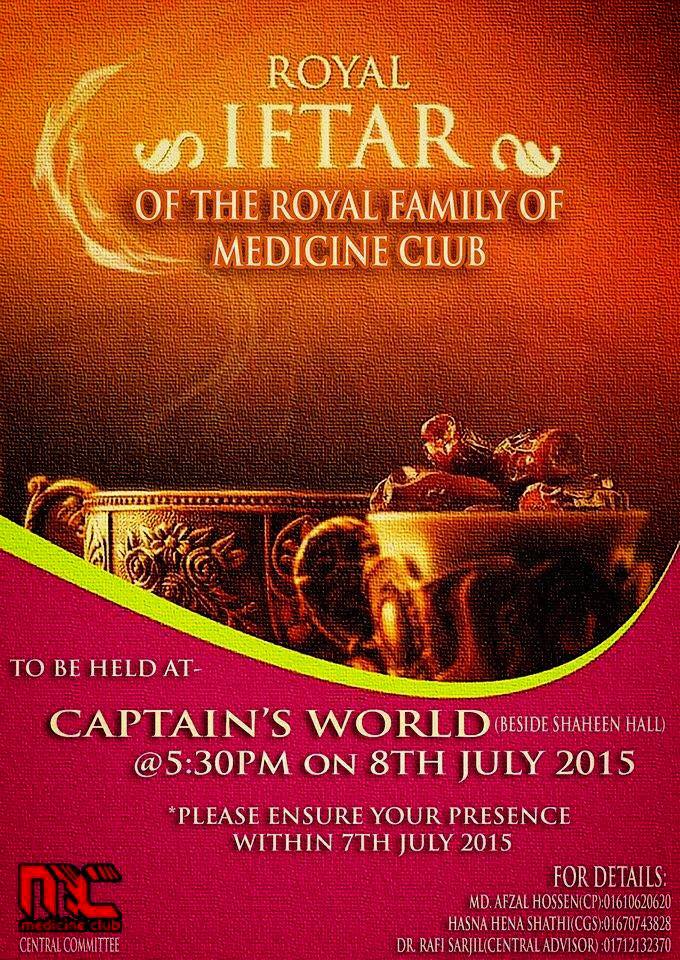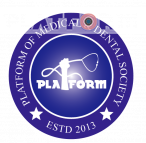এফসিপিএস পার্ট-১ এর প্রশ্ন কেমন হওয়া উচিৎ ?!
অনেকেই যে ঝমেলায় পড়ে সেটা হল প্রশ্নপত্র কেমন হয় তার সাথে নিবিড় পরিচিতি না থাকা।
পার্ট-১ এর প্রশ্ন মূলত দু ধরনের –
1. Multiple true false (MTF) or multiple response questions is a format in which candidate choose more than one response from a list of possible answers. There are no restriction on the number of answers to which the correct response is ‘true’ and the number, to which the correct response is ‘false’. It allows a series of questions to be asked relating to a single topic.
2. Single best response or answer (SBA) – This format consists of a list of possible answers, among which, only one is the “best” and the remaining are
inferior but not incorrect. The student is instructed to select a single correct answer or best or most appropriate choice from the group of five
possible answers.
প্রশ্নের কতক অংশ থাকে। এদের নামও ভিন্ন যেমন –
The item is the entire test question, which consists of a stem, question or lead in and several options. Question should focus
on an important concept of curriculum.
The stem consists of a clinical scenario or statement.
Compared with MTF questions, in SBA the stem should be long and the options short. It should contain all the relevant information (signs, symptoms, lab test etc.) that is necessary to answer the question.
The possible answers are called options, alternatives or choices related to the stem.
The correct answer is called the key while rest of the options is called the distracters or foils
যেভাবে গঠন করা হয়:
The stem is usually the first part. It should be brief and clear. Items which use just one or two words in the stem are better avoided. Direct and complete statement is preferable (e.g. which of the following characteristics
are the features of . . . .) as incomplete stems lowers the students’ correct response rate by 10 – 15%.
The stem for MTF may be:
a) A single ward e.g. Tetracycline.
b) A statement e.g. contraindications to the use of
Tetracycline include –
c) Photograph (intrinsic staining)
d) X-ray periapical view.
g) Biochemistry, hematology or other report.
h) A statement from a text
OR A short description of a problem, which may be a case history or clinical scenario ± pathological data ± radiological findings (not more than 50 words) in case of single best answer question (SBA). e.g. Periapical granuloma
• Writing a question or lead in:
It should be clear and short, asking what is the best answer or a similarly phrased question. e.g. ‘the most likely diagnosis is …..’
• Writing the key or correct answer/s:
The correct answer is one or the candidate make a single mark on the answer for each question in case of SBA or it may be more than one in MTF question. The key should be clearly correct, should not be longer than other
distracters and should not contain any clue.
প্রশ্ন প্রণেতার যে বিষয়গুলো মাথায় রাখতে হয় –
The examiners should know exactly what he/she wants to ask and they have to select the words or sentences that cannot be misunderstand. During construction of question, following points need to be remembered:
• The stem and options must be clear, concise, unambiguous and correct in grammar and sentence.
• Questions must not contain clues to the correct answer for the student.
• The options should be continuous with the stem e.g.
Q. Cyanacobalamin (Vitamin B 12 )-
X Required for folic acid metabolism
√ Is required for folic acid metabolism
• Options in one item should not reveal information that allows the candidate to automatically know the correct answer to another item. This is referred to as ‘cueing’ when an option in one item provides a hint
to the answer for another item.
• Terms such as ‘invariable’, ‘always’, ‘must’, ‘all’, ‘only’, and ‘never’ should be avoided since they imply absolutes and are therefore likely to be false.
e.g.
a) Haemophilia never occur in female
b) Gumbleeding is always found in Leukemia
• Similarly ambiguous/ imprecise/ too open term like sometimes, possible, may, often, commonly, rarely, usually, can, a few must also be avoided for MCQs to generate valid scores as these terms are difficult to interpret, have different meaning to different person and the answer tends to be true. E.g.
a) Weight loss is sometimes found in thyrotoxicosis
b) Weight loss is commonly found in thyrotoxicosis
c) Weight loss is found in a few patient with thyrotoxicosis
d) Candidal hyphae often found in buccal scraping during angular chelitis
e) The possible side effect of Tetracycline are . . .
• The term ‘typical’ is a useful one for multiple-choice questions. Its meaning implies ‘that which is found most commonly’.
‘Characteristic’ implies a time honored anatomical feature, and ‘recognized’ an accepted textbook description. e.g. Hutchinson’s teeth is a recognized features of congenital Syphilis OR the characteristic feature of congenital Syphilis is Hutchinson’s teeth.
• Should not include the phrases none of the above or
all of the above
• The question like “which of the following are correct?” should not be used, as the question is unfocused.
• Eponyms, acronyms or abbreviations without some qualification after each term should be avoided.
E.g. the most likely cause of MPDS is . . . . . . .
Examinees may be unfamiliar with such terms (myofascial pain dysfunction syndrome)
• Plausible alternative should be used in options; otherwise it will give a clue to correct answer. e.g
The following vitamin deficiencies are common in glossitis:
a. Folate
b. Riboflavin
c. Vit B12
d. Vit D
e. Zinc
(all vitamin , e. zinc micronutrient)
• Avoid negative statement in the stem or option.
e.g. The following are not the feature of Ewing sarcoma
• Avoid double negative in the stem or option.
e.g. The following features are not unusual in Trigeminal neuralgia
• Avoid double statement in the stem or option as the student may not be certain as what part is true and what other part is wrong.
e.g. The electric pulp test & orthopantomogram are used to diagnose acute pulpitis.
• Avoid opposite statement in the stem or option.
e.g. Septic shock is characterized by:
i) hypoglycemia
ii) hyperglycemia
• Be specific: Inclusion of more information in the question may result in less confusion. e.g. patient’s age or sex or habit. What may be appropriate
treatment in eruption cyst of infant, may not be appropriate in a gingival cyst of 60 year old person.
পূর্ণাঙ্গ প্রশ্ন আবার নানা রূপে হতে পারে। যেমন-
Factual knowledge/ Recall:
Q. The risk factors for Osteomyelitis are:
a. Fractures including gunshot wounds
b. Radiation damage
c. Paget’s disease
d. Late stages of fi bro-osseous lesions
e. Osteopetrosis
Understanding:
Q. Primary herpetic gingiva-stomatitis:
a. is caused by herpes simplex virus (HSV) type 1 or type 2
b. is followed by herpes labialis in 30% cases
c. is an increasingly common disease in children
d. shows ballooning degeneration of epithelial cell nuclei
e. is accompanied by a rising titre of serum antibodies against HSV
Application:
Q. Dental local anaesthetics:
a. Cross the placenta during pregnancy
b. May result in an immune reaction in patients
allergic to latex
c. May be administered via the periodontal ligament
d. Include ethyl chloride
e. Applied topically prevent the pain on injection for inferior alveolar nerve blocks
Any TOPIC can form the basis for options in SBA
List of possible themes:
Arteries (external carotid artery, maxillary artery)
Metabolic defects (osteoporosis)
Physical signs/ symptoms (spontaneous pain, lancinating pain in tooth bearing area)
Muscles (masseter, lateral pterygoid)
Body fluid electrolytes (hypocalcemia, hepercalcemia)
Diagnoses (giant cell arteritis, referred pain in jaw)
Nerves (inferior alveolar nerve, nasopalatine nerve)
Crucial investigations (salivary gland biopsy)
Cells (fibroblast, myoepithelial cell)
Causative agents (strepto viridans, candida albicans)
Lab studies (candidal hyphae)
Cell components (odontoblast)
Pathological process (bilateral parotid swelling)
Initial management steps (Ludwig’s angina)
Blood components (platelet counts, serum iron level)
Management alternatives (chronic hyperplastic pulpitis)
Immune disorders (Sjogren’s Syndrome)
Risk factors (chronic periodontitis)
Hormones (parathyroid, aldosterone)
Toxic agents (fluoride toxicity)
Drugs/ side effects (Amoxicillin, Tetracycline) etc.
সংগ্রহ:শিশির গাজী
মূল লেখা – Professor Tahmina Begum, FCPS,
MD, M MEd, Head, Dept. of Paediatrics, BIRDEM, Dhaka.
Journal of Bangladesh College of Physicians and Surgeons
Vol. 30, No. 3, July 2012

